
5 Best Shooting Tripods for Long-Range Precision Rifles (Photo by Ben LaLonde)
Early on in life, I learned the value of a quality tripod. Originally a photographer by trade, I knew even the slightest movement in the wrong conditions would ruin a shot. As I learned to shoot rifles from tripods, especially at extended ranges, I found the same to be true. Tripods can level the playing field, making difficult shots in awkward positions a lot more manageable. They’re not limited to tradition front-rifle support, but can be used as rear supplementary support as well. When looking at tripods for shooting, I personally have a few “must haves,” as well as a few, “prefer to haves.” Anything more is icing on the cake.

Table of Contents
- Must-Haves
- Prefer-to-Haves
- Really Right Stuff S.O.A.R. TFCT 34L with Anvil 30 ARC
- Two-Vets Sporting Goods – Recon V2 with 55mm Dual Tension Ballhead and Area 419 Arcalock Clamp
- BOG Deathgrip Infinite
- Fat Boy Tripods Traverse Three Section with Invert60 Ballhead
- Vortex Radian Carbon Fiber Tripod + Ballhead
- Final Thoughts
Must-Haves
- Stout legs – Strong legs and stiff legs often go hand-in-hand. It needs to support my rifle and any weight I put onto it while stabilizing my shot.
- Easy adjustments – Holding a rifle for a precise shot is enough to think about. I want knobs, levers, and dials I can quickly operate one-handed without stressing.
- Counterweight point – Every tripod I tested for this write-up features one, most often in the form of a hook or loop located directly under the head. To make my shot more stable, I can tie off to heavy objects, or even myself if need be.
- Multiple leg angles – again, all tripods tested featured three angle positions. These can be used in any combination for variations of prone, kneeling, and standing shots.
- Big rubber feet – rubber is a shock absorber, and as such, rubber feet on the ground help absorb and distribute recoil.
- ARCA-Swiss style clamps – Clamps to secure the 1.5-inch wide dovetail rails provide fast and secure mounting options for rifles. There are a few variations of it on the market, but at its core, it is the gold standard for rifle mounting.
Prefer-to-Haves
- Vented hinges – At the top of the legs, vent holes make deployment of the legs fast and worry-free.
- Spring-loaded ratcheting angle locks – Again, my preference. It’s one less thing I have to think about when changing shooting positions quickly.
- Bubble levels – Most every rifle I own has a bubble on the scope or action itself, but having one more to reference never hurts.
Those aren’t exhaustive lists, but they’re there to be thought provoking when looking for your next shooting support. Without further ado, let’s get into 5 of the best shooting tripods of the year.
Really Right Stuff S.O.A.R. TFCT 34L with Anvil 30 ARC

RRS began as a photography equipment company in 1990, designing and creating more consistent and well-thought-out quick-release plates, tripods, and other accessories. Their Sport Optics and Rifle division has kept ahead of the curve with highly engineered, durable, and lightweight tripods capable of supporting even the heaviest of rifle platforms. Every single part of each tripod is designed, made, and hand-assembled right here in the USA.
Their compact but lightweight Anvil-30 ARC head is both ergonomic and feature packed. It has seen a few iterations over the last few years. The most up-to date version still features RRS’s easy to use lever-release, but it is now repositionable for tailoring to your preference. It also features the all-new R-Lock System. The R-lock provides supplemental security to your rifle mount in the form of a pin that locks into holes machined along the underside of RRS’s quick-release ARCA-Swiss Style plates. Even if you have ARCA plates without holes for the pin, the rail clamp can still be used in its traditional configuration. The newest ARC head also features toolless tension adjustment for the Patent-pending dual-rail style clamp. This allows you to set the jaws to the appropriate tension needed for your ARCA or Picatinny rails. Lastly, the throw lever now features a paddle style safety lock to prevent accidental release of the clamp.
As for the legs, The US-made carbon fiber legs are incredibly stout, even for their comfortably narrow dimensions. Because of the way the legs are offset in their hinges, they are able to fold in nice and tight to each other, keeping their packing dimensions to a minimum. The hinges are also vented, preventing airlock when deploying and collapsing the legs. This particular model, the TCFT 34L with the Anvil 30 ARC, extends to over six feet tall at its highest point, and can support anywear from 45 to 85lbs, depending on how high you extend its four sections. Even at its tallest, 45lbs is generous, and will cover most heavy long range platforms. The legs have three adjustable positions with ratcheting locks that automatically engage when adjusting from horizontal to vertical positions. The TFCT 34-L with Anvil-30 ARC head comes in with an MSRP of $1,580.00, making it the highest-priced option on our list.
Two-Vets Sporting Goods – Recon V2 with 55mm Dual Tension Ballhead and Area 419 Arcalock Clamp

The first word that comes to mind when I see the Recon V2 is clean. The Recon V2 brings in a lot of features you should expect to find in premium carbon fiber tripods, at a more mid-level price point. The 38mm main tube is made of a stout and tightly woven carbon fiber, while the center section, hinges, and twist locks are all CNC machined from high strength aluminum. The grooved aluminum twist locks only require a quarter turn to loosen and retighten, making for fast and solid adjustments in the field. The hinge locks are able to ratchet and can lock out at 3 angles, giving you shots anywhere from prone to fully standing. At its full height, the Recon V2 with the 55mm Ballhead is just a couple inches shy of six feet tall, making standing shots a breeze, even at high angles.
The center section has been narrowed for the V2, giving a minimal profile when legs are collapsed against each other. The hinges are vented to allow for easy deployment and compression of the leg sections. The center section also features a rubber-tipped set screw, which lets the user snug it into whatever head they decide to use, eliminating the need for any sort of threadlock on the ⅜”-16 main screw. They also feature multiple ¼”-20 threaded holes around the center section and hinges for accessory mounting. The wide rubber feet provide support and stability in most environments, but when needed, simply unscrew the feet to reveal a steel spike in each. Spinning the threaded spikes from the inside to the outside gives you even more traction in soft terrain. The price of the Recon V2 alone is $605.00.
As for the head itself, the 55mm ballhead features a dual-tension system for ball adjustments. Set the smaller of the knobs to the level of tension you like, then use the large main knob to lock and unlock the head quickly. The third small knob on the tripod allows the user to loosen and tighten the panning portion of the head, giving glass-smooth horizontal movement. The Area 419 Arcalock Clamp features three steel pins that lock into Area 419 Arcalock scalloped rails. This pin/scallop combo prevents unwanted movement of the rifle in addition to the friction tension of the clamp. If you prefer to run smooth sided ARCA rail, this isn’t a problem. A set screw under each pin can be backed out, and the pins removed. Simply unwinding the oversized knob loosens the spring-loaded clamp and allows for ease of movement. The knob isn’t as fast as a throw lever, but does allow the user to adjust the tension in the ARCA plate exactly where they want it. The price of the ballhead in that configuration is $235.00. Combined with the price of the tripod, tax included, the full setup can be gotten right around $900.
Despite being a relatively new company, Two Vets has come out swinging with a wide product line covering the bases from competition to hunting. Their customer service has, in my experience been top-notch, and I often found my questions being answered by the owner of the company himself. They’re always working to improve their products and have a few exciting plans for 2024.
BOG Deathgrip Infinite

The new Deathgrip Infinite from BOG comes down from their long line of affordable, thought-out hunting products. This latest model contains a number of features that make it better than ever. They started by separating the Deathgrip Clamp from the head, and put an ARCA-Swiss style plate on the bottom. The head itself now has an adjustable ARCA compatible clamp, making swaps between spotting scopes, cameras, and the Deathgrip head itself a breeze. That ARCA clamp tops a lined socket which tilts and rotates freely on the 45mm Aluminum ballhead. The polymer lining keeps the movements both smooth and quiet.
The Deathgrip Ultralite head is made from magnesium to remain lightweight but strong. It weighs less than 1lb, and features a patent-pending dual jaw clamp with rubber inserts to give you a secure, yet non-marring hold on your rifle stock. Clamping adjustments are made with a single oversized, rubberized knob. The dual jaw clamps move quickly, and keep the rifle centered over the tripod, ensuring the best balance. The ARCA-Swiss style plate is securely mounted on the bottom by four steel screws and two indexing pins. Testing the Deathgrip on different platforms, I didn’t have a single rifle it wouldn’t hold securely. From my heaviest AR-10s, to my lightest bolt actions, the clamp held solid through the firing cycle time and again. The jaws open to almost 2.5”, and can tighten to just under 1.3”. The Ballhead itself features overmolded knobs that are large enough to easily manipulate with or without gloves. The ARCA clamp itself can open more than wide enough to accommodate not only the Deathgrip head, but most any ARCA-style rail on the market.

Utilizing lighter materials like Magnesium and Carbon Fiber, BOG was able to drop the weight of the tripod with Deathgrip head to only 6.5lbs. Without the Deathgrip, the carbon fiber tripod comes in under six pounds. Twist locks on the stout carbon fiber legs are fast and easy to use, thanks to being rubberized. Steel spikes stored in the rubber feet are out of the way when you don’t need them, but easy enough to install when you do. The leg hinges feature three settings to adjust them to 20, 45, or 85 degrees. When splayed out to 85 degrees, shots can easily be taken in the prone. The tripod also features a retention strap to keep the legs held together when in transit. The kit comes with a soft carrying case, and an additional ARCA plate for optics.
Fat Boy Tripods Traverse Three Section with Invert60 Ballhead

The Fat Boy Traverse tripod with their Invert60 Ballhead is flashy to say the least. The carbon fiber weave looks like snake skin, and the mossy green anodizing on the upper section stands out. The legs are a stout 42.5mm, and collapsed with the Invert60 Ballhead, it stands 32 inches tall at the ARCA Clamp. This is our bulkiest tripod tested, and with a total weight of 7lbs 11.5oz, it is also our heaviest. The legs have little to no flex, and when folded, integrated stops in the hinge prevent the legs from crossing over in the way of each other.
The hinges feature similar ratcheting technology we saw in a couple previous models, with the three leg positions allowing for shots anywhere from prone to standing. The center section is wider than previous models, and the ⅜”-16 threaded top platform can be swapped out for an aftermarket bowl adapter and 75mm leveling base. The hinges and center section also feature ¼”-20 threaded holes for mounting accessories. The rubberized twist locks on the legs require only a quarter of a turn to loosen or tighten, and the rubber feet feature integrated steel spikes. The spikes stay out of the way, but can be accessed by extending the shortest leg, then spinning the rubber foot up to expose the spike.

The Invert60 Ball Head features a combination picatinny and ARCA rail clamp with an adjustable quick throw lever to loosen or tighten onto your rail of choice. One single rubberized knob controls tension on the 60mm ball head. The “Invert” name comes from the ball itself being mounted to the tripod, and the socket moving around it, opposite of a typical ball head. The grippy knob doesn’t take much of a rotation at all to go from very tight, to quite loose. This makes on the fly adjustments quick, and since the mount is inverted, the adjustment knob stays in the same spot relative to the rifle, making panning and tilting simultaneously a one-stop shop. The threaded plate under the ball features a set screw to prevent the head from coming loose.
The rubberized knobs and twist locks all feature aggressive texturing, ensuring ease of operation in any condition. When fully extended, the three-section legs bring the Invert60 ARCA clamp to 69 inches off the ground. While this option may be a bit big and heavy for backcountry hunts, it is sure to be a solid platform for predator hunting, competition, and regular range day shenanigans. Fat Boy offers the Traverse three section for $750.00, and the Invert60 Ball Head for $375.00, bringing the total cost for this setup to $1,125.00 plus tax.
Vortex Radian Carbon Fiber Tripod + Ballhead

The design of the Radian Carbon tripod from Vortex is very reminiscent of my early photography days using Leofoto tripods and heads. Dimensions, shape, even placement of levers and knobs was very familiar. After offering optic-specific tripods in the past, Vortex has taken the dive into purpose-built, heavy duty shooting tripods. This model is offered as a complete package with your choice of a ball head or a leveling head. I chose the ball head for this review. Like their other products, the Radian Carbon tripod is covered under Vortex’s VIP Warranty. In the package is the set of legs, the head of your choice, a counterweight hook, soft case, ARCA plate for optics, stainless steel spike feet, and all tools and manuals you will need to get started and maintain your tripod.
The legs are stiff, with the main tube having a diameter of 36mm. When all four sections are fully extended, the tripod stands 67 inches at the ARCA clamp on the ball head. The rubber feet must be fully spun off before spinning on the spike feet. The twist locks only require a quarter turn, and the rubberized knob is generously sized, giving sure grip in any conditions. The center section has a metal loop for a sling, as well as a bubble to check level of the legs themselves. I would be remiss if I didn’t say I found myself wanting with some of the design on this tripod. The hinges for the legs are not vented, so I find myself pulling each section to fully extend it. This is a bit cumbersome when speed is of the essence. The hinge locks also do not ratchet in. It was an extra step I needed to take to ensure my legs would be locked out at the position of my choice. It’s not a make or break of course, but I definitely was expecting it as a premium tripod option.
The 55mm ball head features the three knob tension system I spoke about earlier in this review. Two for the ball, and one for the pan. The knobs are aggressively textured and easy to manipulate, despite not being rubberized. The ARCA clamp itself features a twist knob for securing the ARCA plates, and has its own small bubble level, ensuring you can keep the ball level. The maximum load of the tripod with that head is 55lbs. In this configuration, it comes in at a hefty 7lbs, 2.4oz. At it’s widest point when folded, the tripod is 6 inches in diameter, but the feet can come together at the bottom, so it still packs a bit easier than if the legs went straight out. The Vortex name and warranty carry a lot of weight, and despite my misgivings, it is still a solid option. For the premium price (MSRP $1,299.00), I do wish it had a few more of those features that I’ve really found make shooting from a tripod more pleasant.
Final Thoughts
When considering these five models, I looked for what was both solid and fast. Whether hunting or competing, speed matters. The fastest head to operate was by far the Anvil 30 ARC from RRS. The whole RRS setup was the lightest too, and as such, most versatile of the models tested. It’s also the most tested and fielded of any of the above models. The price for me, however, was a breaking point. I personally found myself drawn to the Recon V2 from Two Vets Sporting goods. Whether shooting rifles or even photos, it has been, more times than not, the one I reach for. In my time spent with it, it punched well above the price point at which it is offered. The Deathgrip Infinite Carbon Fiber from BOG was most budget friendly option. It comes with the tools needed to run any rifle, whether it had a rail or not. This past deer season, my good friend was due for neck surgery and couldn’t physically hold up his rifle. I sent this tripod with him for the season, and it gave him the support he needed to take the shot when it mattered. BOG built this one with a purpose. Speaking of dedicated purpose, the big and heavy Traverse from Fat Boy begs to be run in competition or out on a coyote hunt. The Vortex Radian Carbon, while a bit hefty, still finds a home in the worlds of competition and hunting.
These I tested are only a small batch of the wide range of tripods on the market. From even bigger competition models to the smallest and lightest backcountry tripods, there is sure to be one that fits your needs at the price point you want to work with. If you can try one before you buy one, even better. Whether hunting or competing, be sure you have the tools you need to make the shot count when it matters.








![Air gun 101: The differences between .177 & .22 – Which jobs they do best ? [Infographic]](https://airgunmaniac.b-cdn.net/wp-content/uploads/2024/11/1773-218x150.jpeg)












































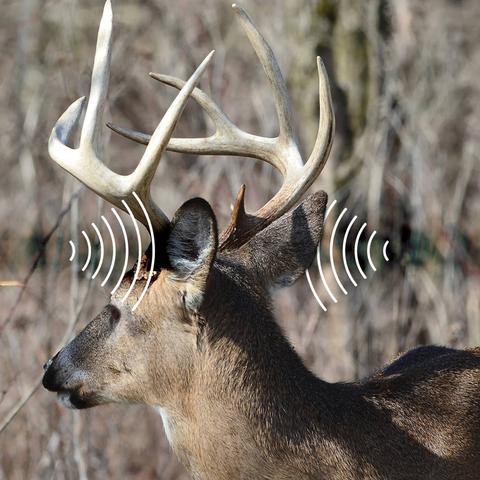



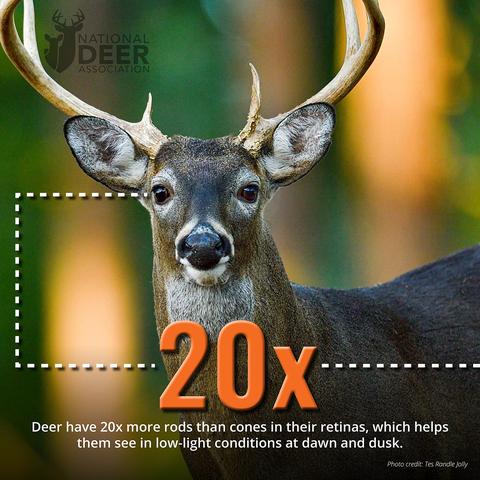
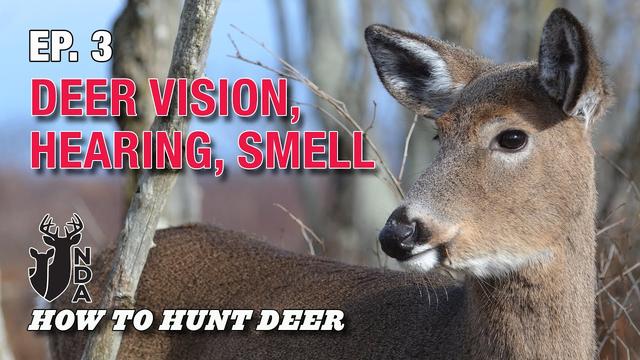










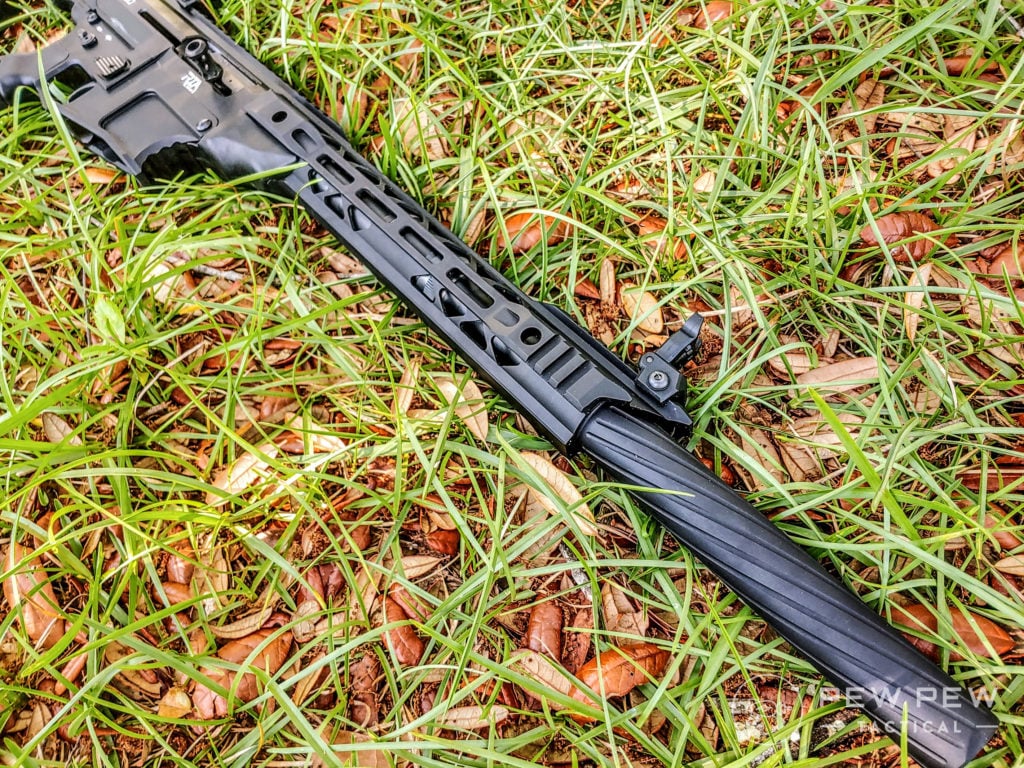
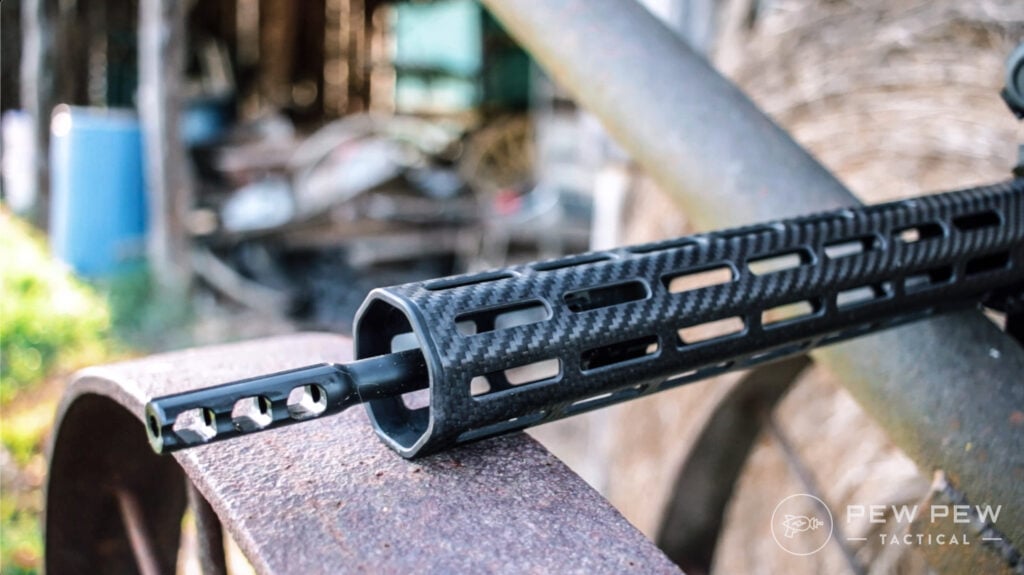
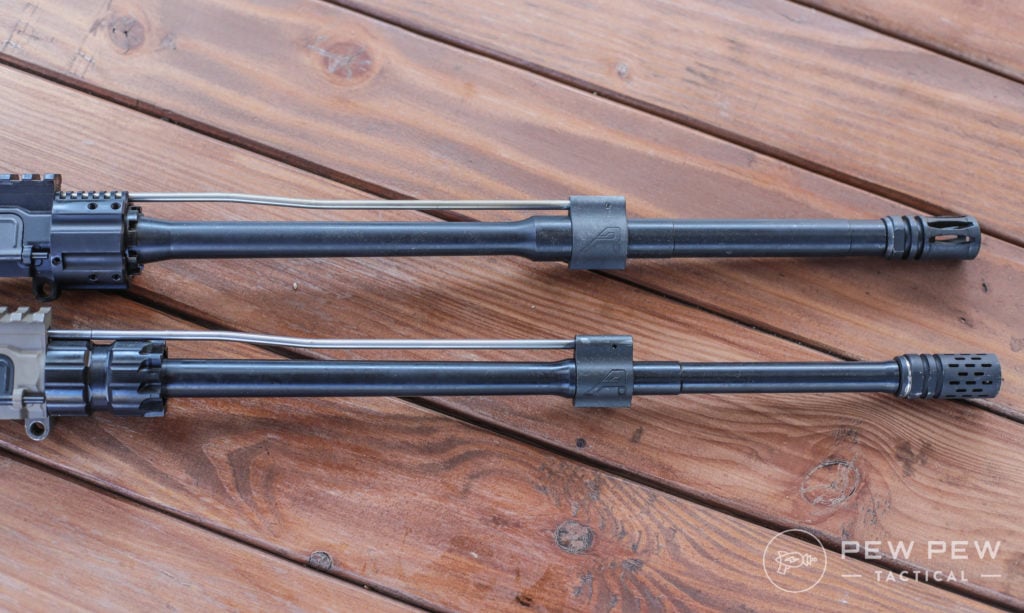
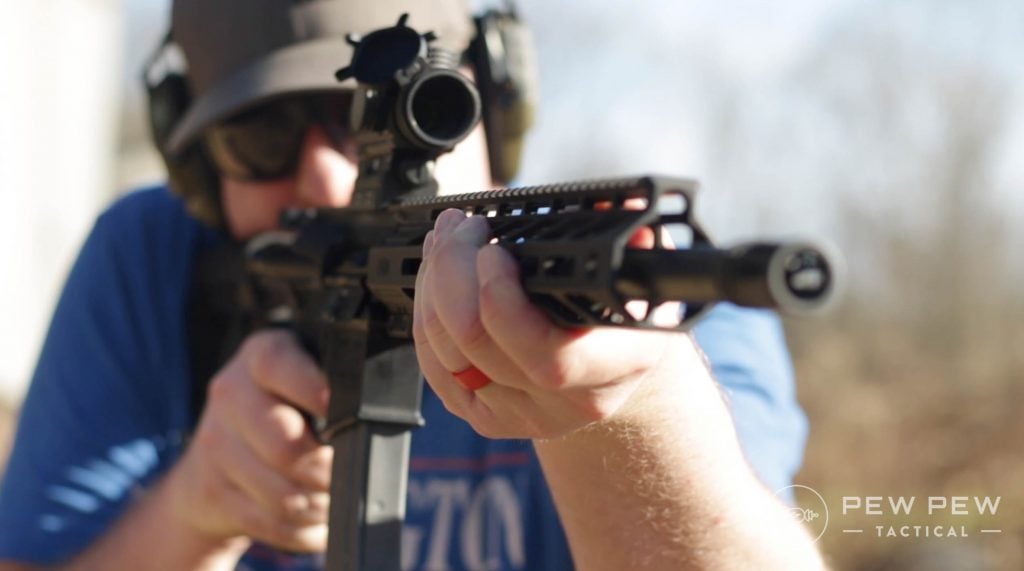
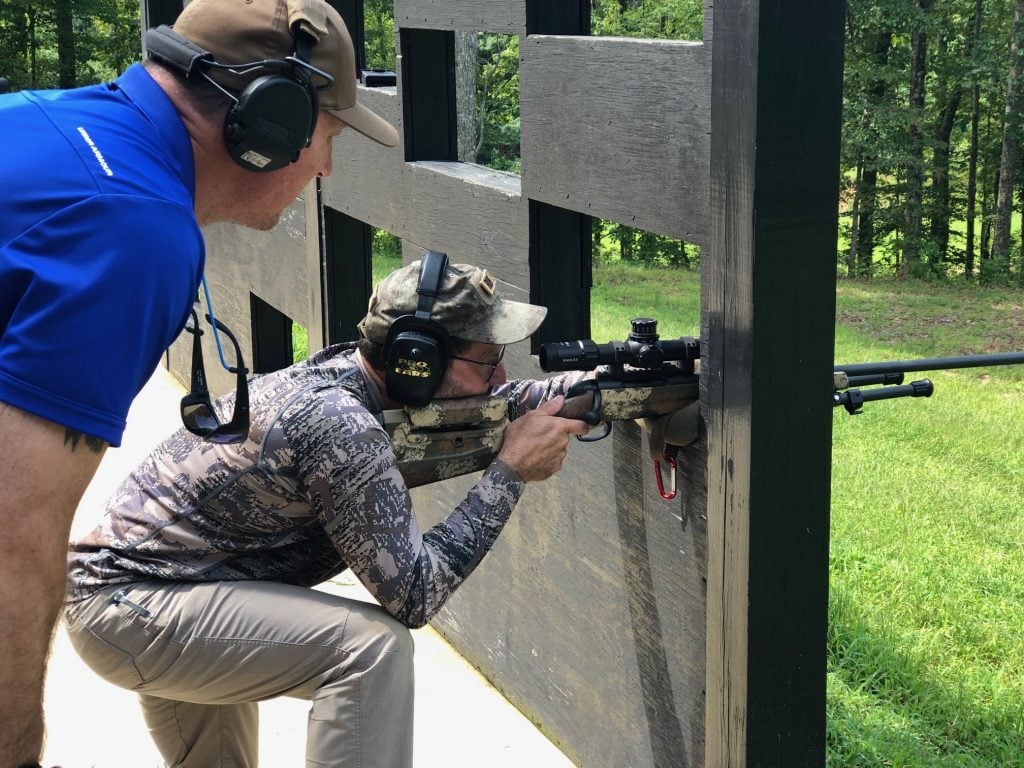
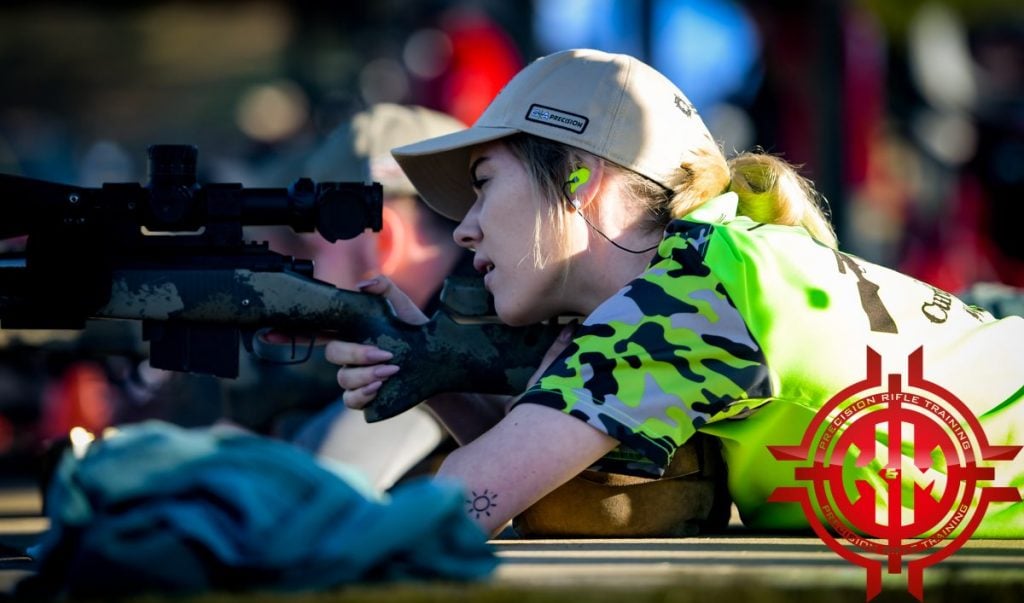


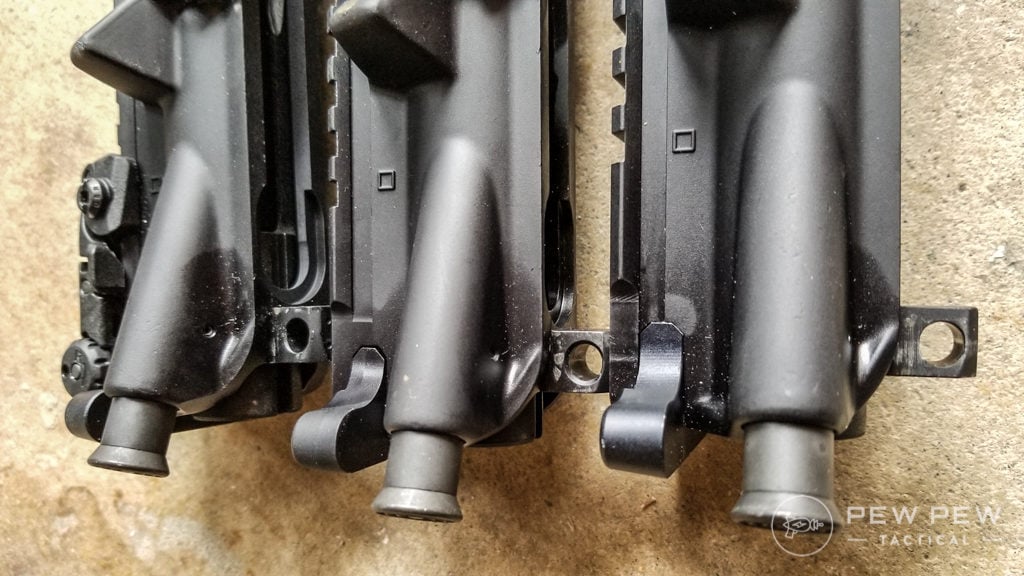
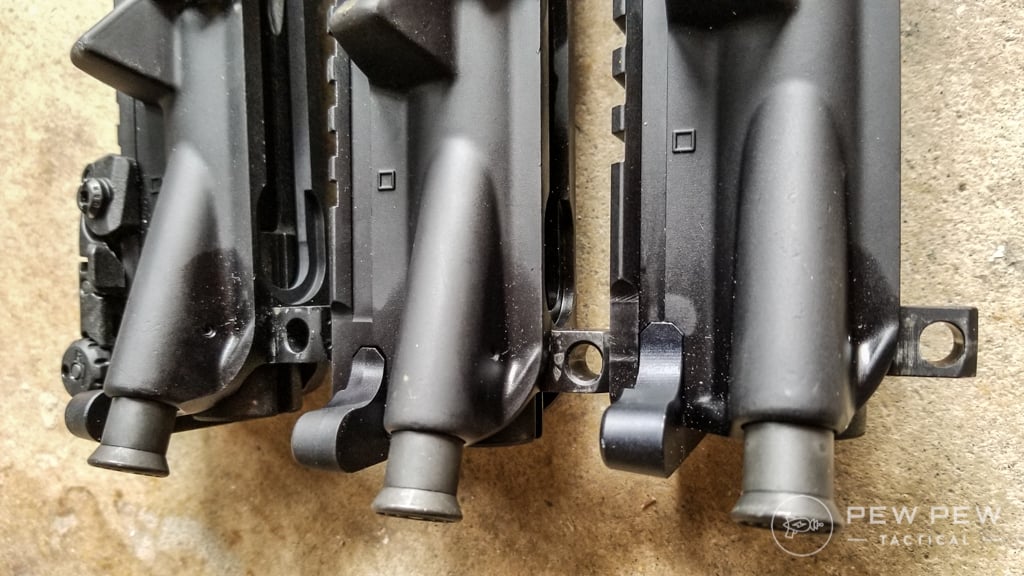
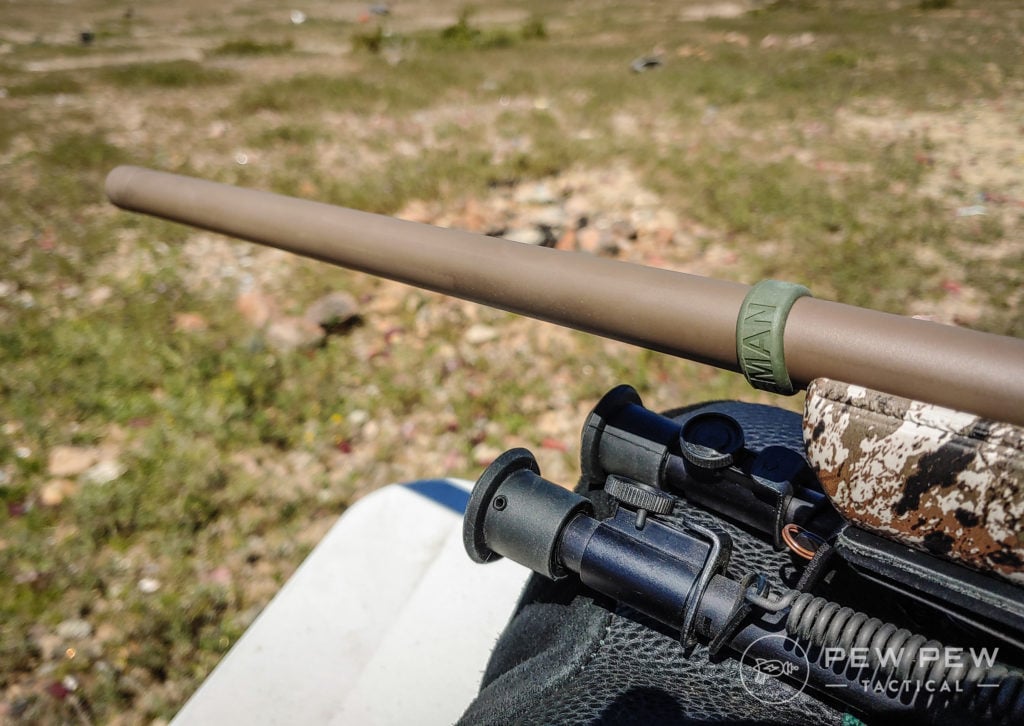
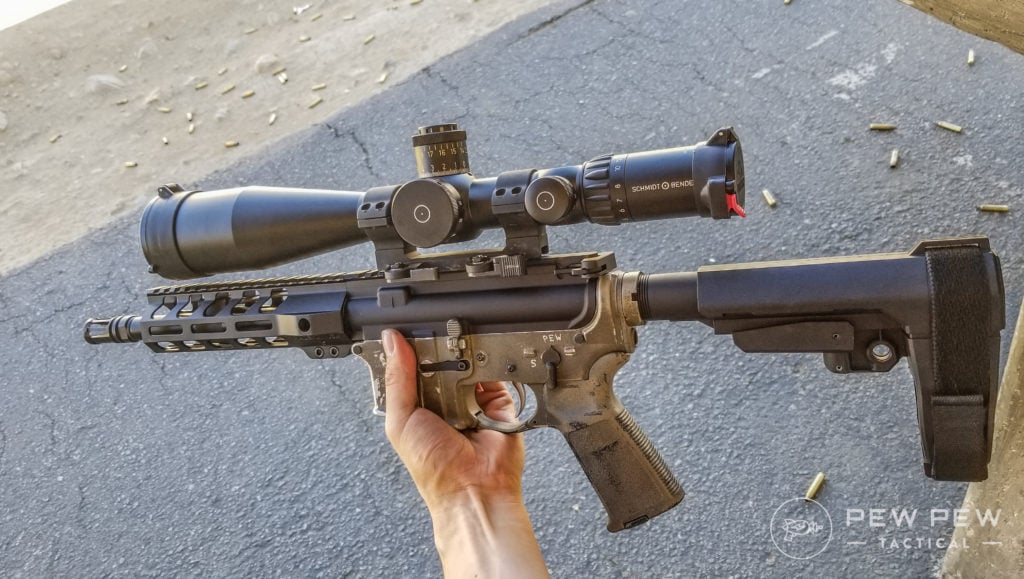
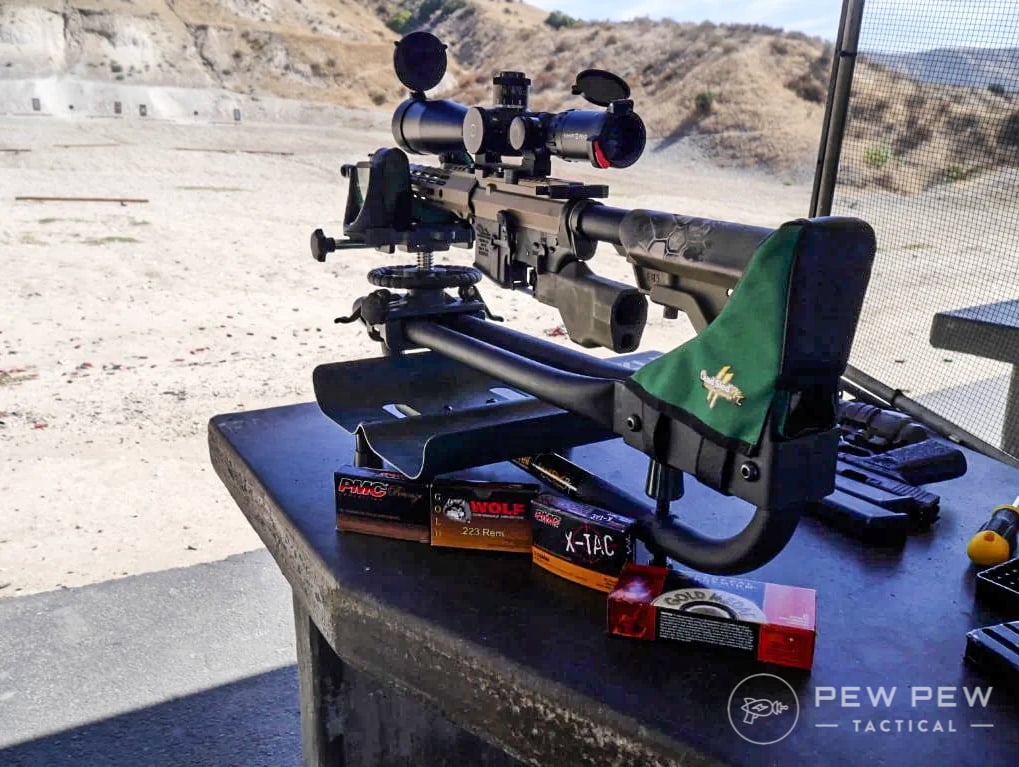
![Barrel Break-In: What Is It & How To Do It Right [Guide]](https://www.pewpewtactical.com/wp-content/uploads/2021/12/8.-Remington-Factory-Ammo-1024x578.jpg)
![Barrel Break-In: What Is It & How To Do It Right [Guide]](https://www.pewpewtactical.com/wp-content/uploads/2018/04/Winchester-32-Piece-Cleaning-Kit-1024x683.jpg)
![Barrel Break-In: What Is It & How To Do It Right [Guide]](https://www.pewpewtactical.com/wp-content/uploads/2021/11/4.-Crimson-Trace-RAD-Max-Range-Shooting-1024x575.jpg)


![Air gun 101: The differences between .177 & .22 – Which jobs they do best ? [Infographic]](https://airgunmaniac.b-cdn.net/wp-content/uploads/2024/11/1773-150x150.jpeg)


